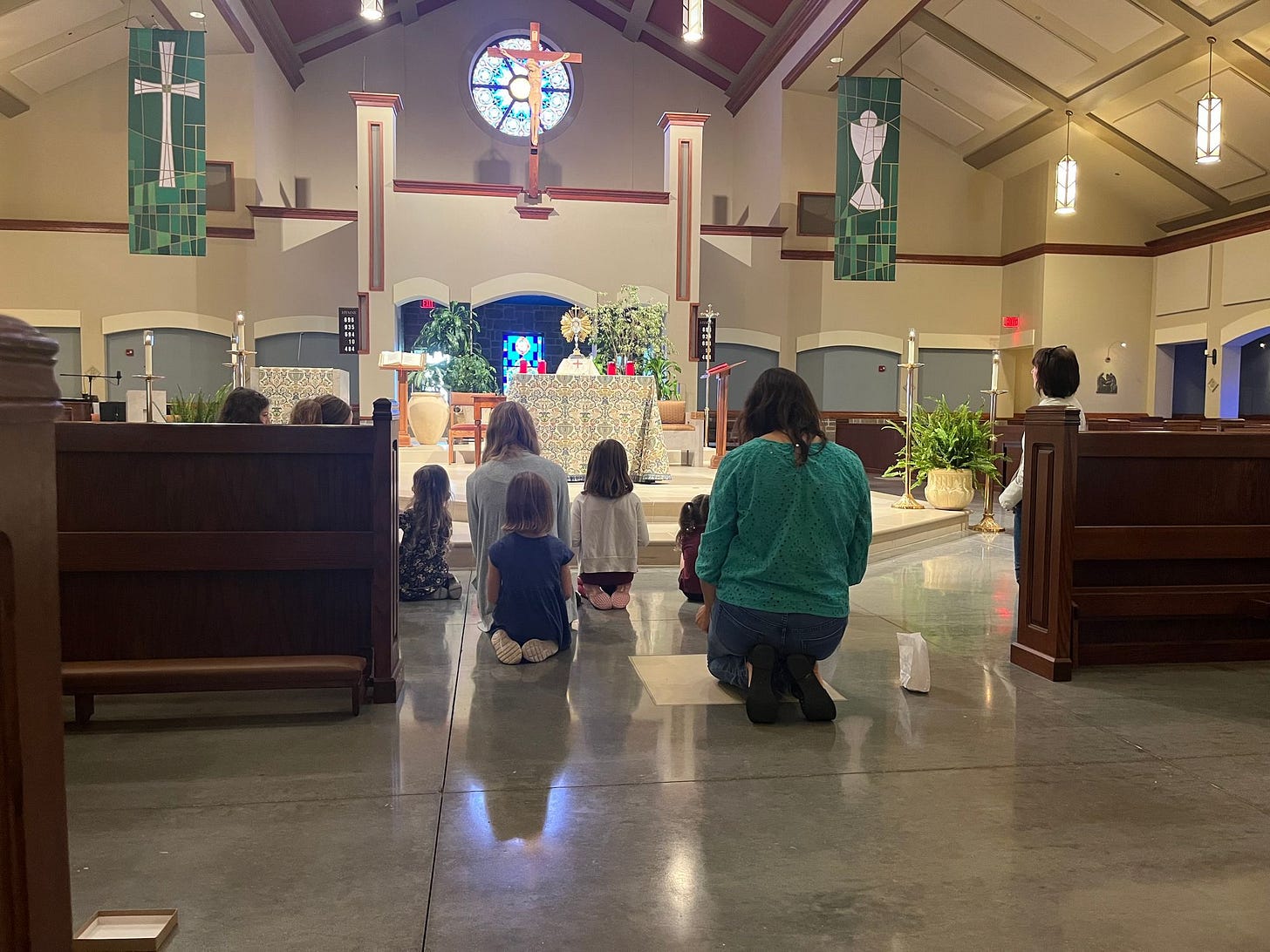Children’s adoration offers young families a chance for prayer, community
St. Mary’s Parish in Blacksburg, Virginia is making Eucharistic adoration accessible for even its youngest parishioners.
It’s no secret that bringing young children to church can be challenging.
Pope Francis once said that “It is a beautiful homily when a child cries in church.” But for many parents, the experience of watching over noisy, inattentive children at Mass is anything but prayerful.
In fact, it can be downright overwhelming and discouraging, particularly when par…

